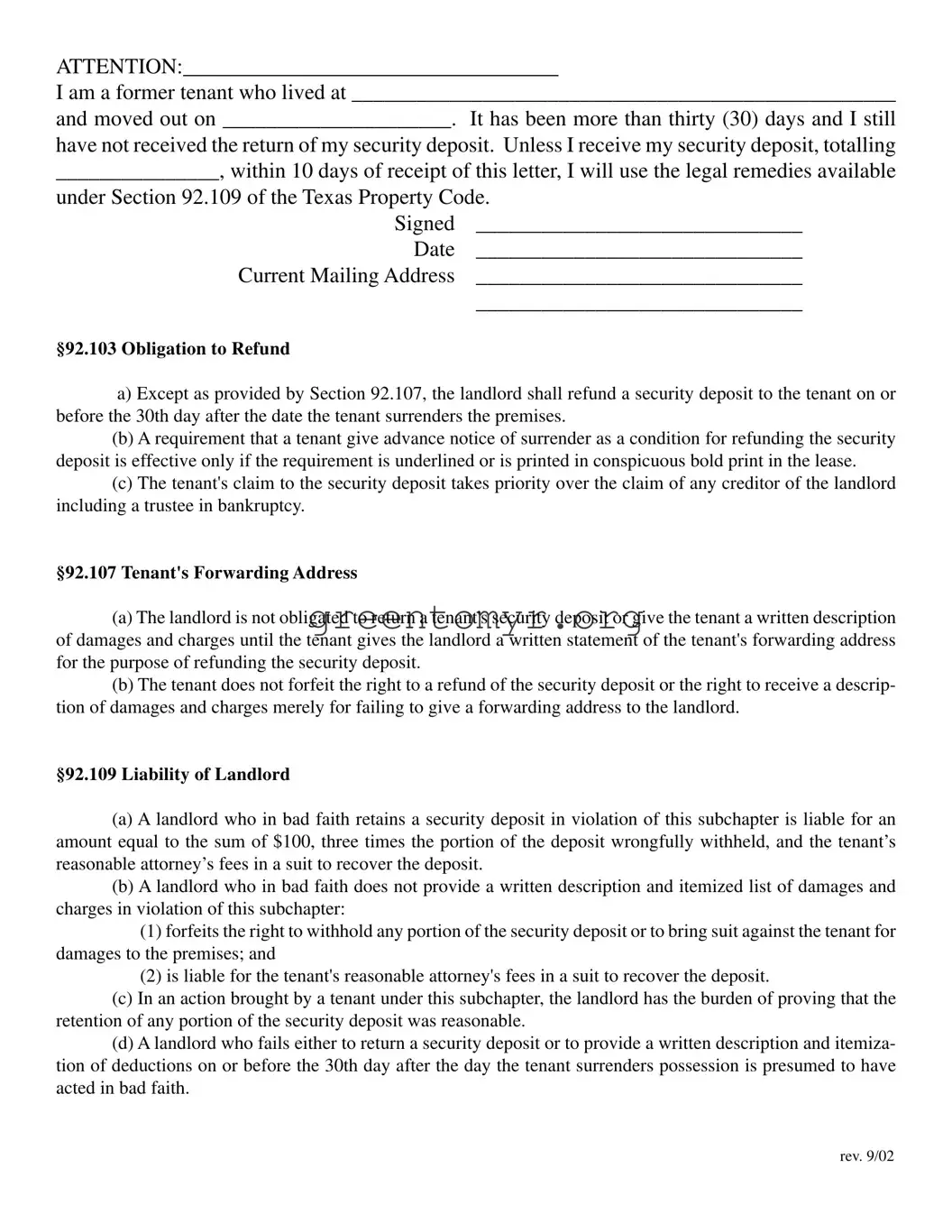ATTENTION: __________________________________
I am a former tenant who lived at __________________________________________________
and moved out on _____________________. It has been more than thirty (30) days and I still
have not received the return of my security deposit. Unless I receive my security deposit, totalling
_______________, within 10 days of receipt of this letter, I will use the legal remedies available
under Section 92.109 of the Texas Property Code.
Signed |
______________________________ |
Date |
______________________________ |
Current Mailing Address |
______________________________ |
|
______________________________ |
§92.103 Obligation to Refund
a)Except as provided by Section 92.107, the landlord shall refund a security deposit to the tenant on or before the 30th day after the date the tenant surrenders the premises.
(b) A requirement that a tenant give advance notice of surrender as a condition for refunding the security deposit is effective only if the requirement is underlined or is printed in conspicuous bold print in the lease.
(c) The tenant's claim to the security deposit takes priority over the claim of any creditor of the landlord including a trustee in bankruptcy.
§92.107 Tenant's Forwarding Address
(a)The landlord is not obligated to return a tenant's security deposit or give the tenant a written description of damages and charges until the tenant gives the landlord a written statement of the tenant's forwarding address for the purpose of refunding the security deposit.
(b)The tenant does not forfeit the right to a refund of the security deposit or the right to receive a descrip- tion of damages and charges merely for failing to give a forwarding address to the landlord.
§92.109 Liability of Landlord
(a)A landlord who in bad faith retains a security deposit in violation of this subchapter is liable for an amount equal to the sum of $100, three times the portion of the deposit wrongfully withheld, and the tenant’s reasonable attorney’s fees in a suit to recover the deposit.
(b)A landlord who in bad faith does not provide a written description and itemized list of damages and charges in violation of this subchapter:
(1)forfeits the right to withhold any portion of the security deposit or to bring suit against the tenant for damages to the premises; and
(2)is liable for the tenant's reasonable attorney's fees in a suit to recover the deposit.
(c)In an action brought by a tenant under this subchapter, the landlord has the burden of proving that the retention of any portion of the security deposit was reasonable.
(d)A landlord who fails either to return a security deposit or to provide a written description and itemiza- tion of deductions on or before the 30th day after the day the tenant surrenders possession is presumed to have acted in bad faith.
rev. 9/02
